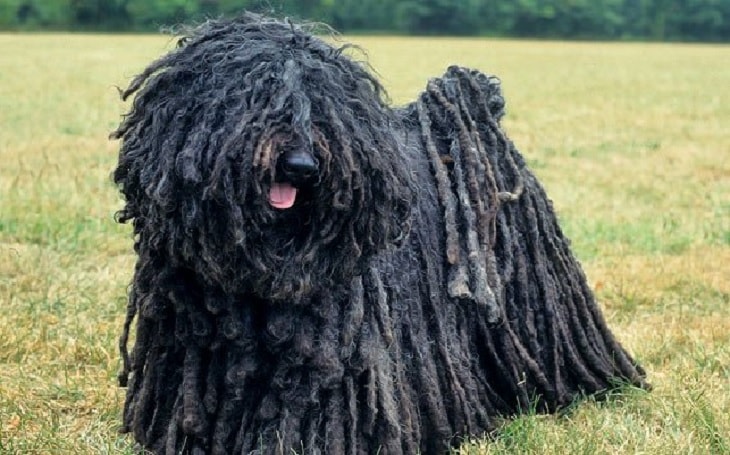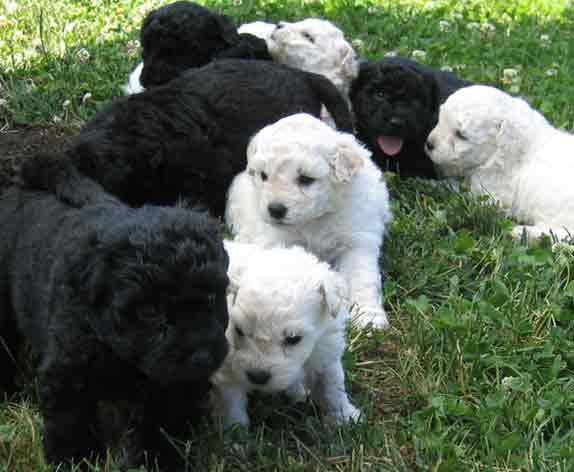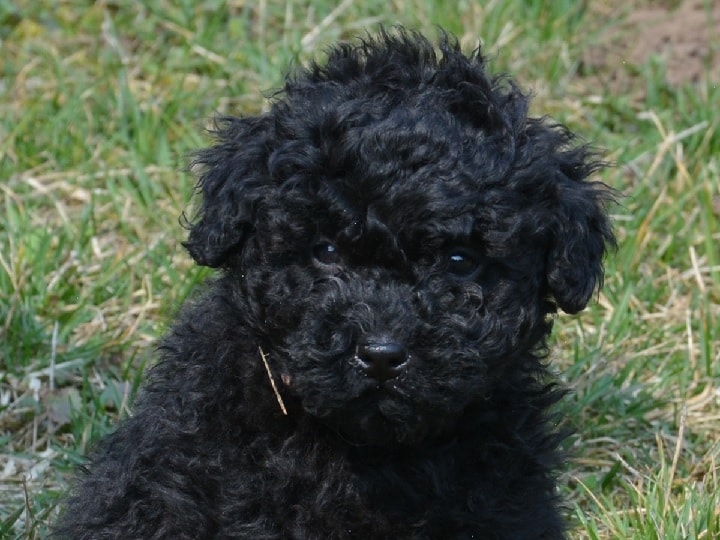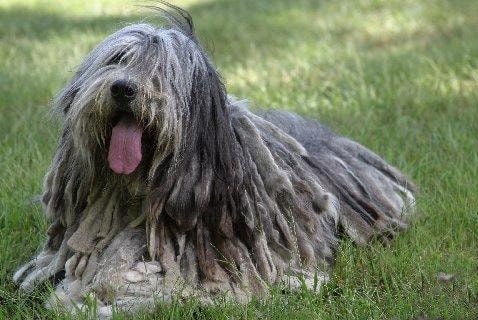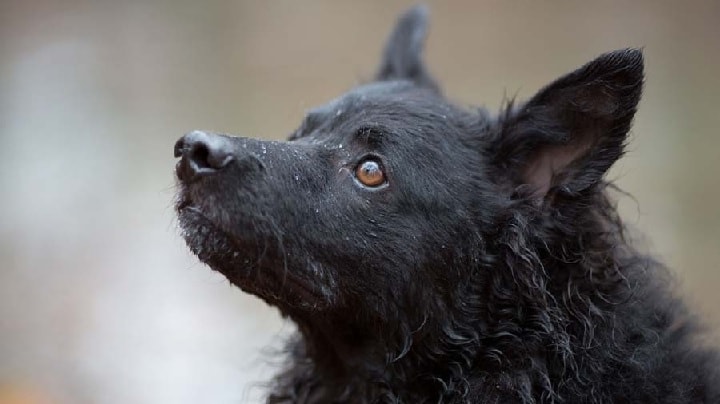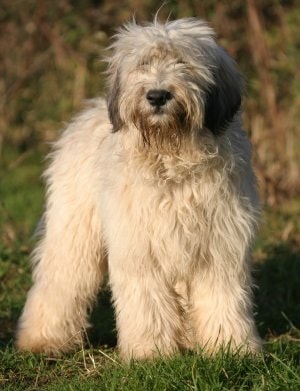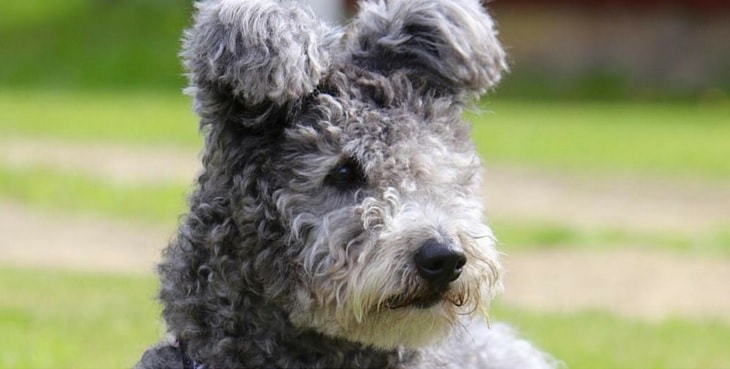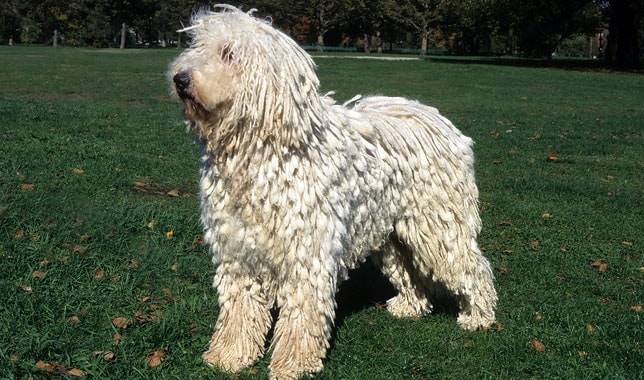Puli Dog Breed Information
| Country of Origin | Hungary |
| Nicknames and Other Names | Hungarian Puli |
| Scientific Name | Canis lupus familiaris |
| Breed Type | Purebred |
| Group | Herding Group Working Group |
| Bred For | Herding and guarding livestock |
| Size | Small to medium-sized |
| Recognized By | AKC, FCI, UKC, CKC, ANKC, NZKC, KC |
| Life Span | 10-15 years |
| Ideal Weight | 25-35 (male and female |
| Ideal Height | Male: 17 inches Female: 16 inches |
| Fur Type | Dense, weather-resistant, dreadlock |
| Common Colors | Black, White, Silver |
| Markings | Black markings, white markings, Black mask |
| Availability | Moderately available |
| Achievements | None |
| Suitable for Apartments | Yes |
| Used in World War | No |
| Most Similar To | Komondor |
Puli is a medium-sized dog that has a unique appearance. The first recognizable feature is their dreadlocks covering them from head to the tip of their tail. It is a herding dog that used to herd sheep in its homeland Hungary. They are very active dogs that are not best suited in an apartment. They need open space to perform their regular activities.
Puli is a compact, square-shaped dog, and well-balanced dog. The head is medium-sized in proportion with the body. The eyes are deep-set, large, dark and the ears are set higher than the level of the eyes. Their coat is dense, weather-resistant and long covering their whole body, even face.
Origin and History
The Puli was originated in Hungary and been used as a herding dog for over 1000 years. Its exact ancestor is unknown. Puli was used to drive flocks of sheep by Hungarian shepherds. They used two dog breeds, where large dogs either Kuvasz or a Komondor guarded flocks at night and Puli work in the day. The Puli’s thick dreadlock coat was perfect for the brutal weather in that region.
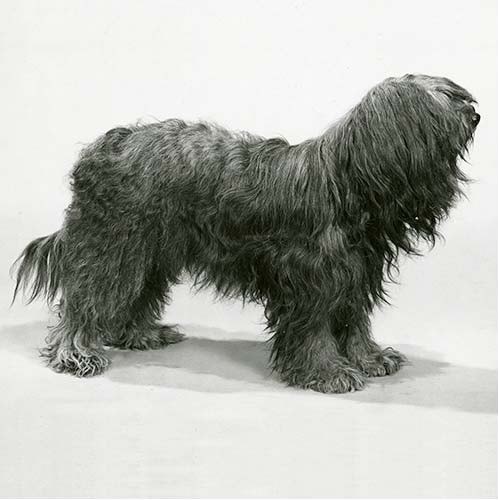
Image Source: akc
In 1951, the Puli Club of America was formed and it is the parent club for the breed. The American Kennel Club recognized this breed in 1936 as a member of the Herding Group.
Is Puli Child-Friendly?
Puli is very loving, playful and protective of its family children, which makes them a great companion for children. They are spirited and love to play with kids. However, due to their high herding instinct, toddlers and young children should not interact with them without adults supervision. Otherwise. they are very protective of children and thrives for their company.
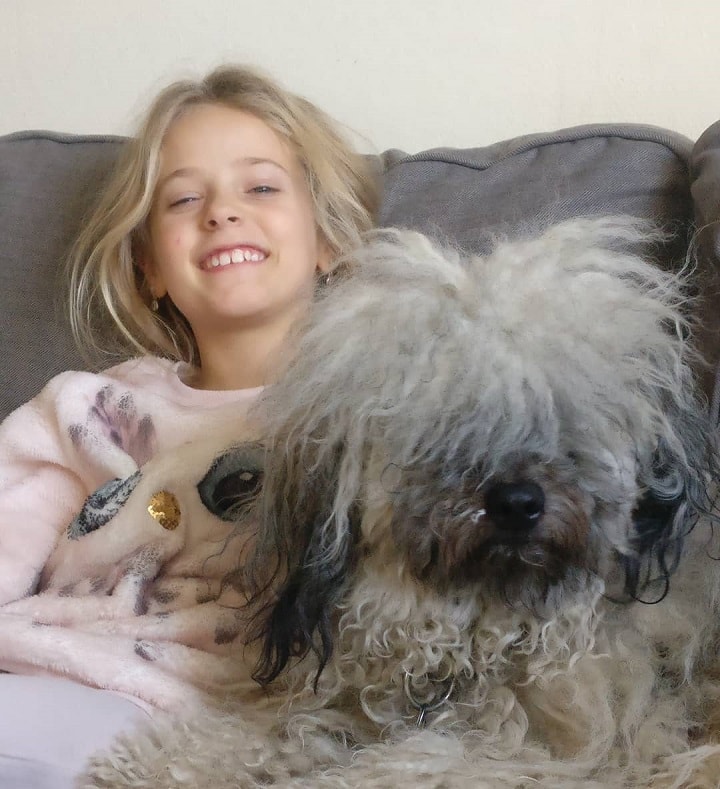
Image Source: Instagram-@rubel_and_pantera_the_pulis
Temperament, Behavior, Personality
Temperament: Puli has a loyal and home-loving temperament. It is a loving and affectionate dog who thrives for its people company and enjoy being with them. They are an active working dog who needs regular exercise to keep themselves fit, healthy and occupied. They do great with other pets if raised together but small pets are not very suitable with them as they have herding instinct.
Behavior: Puli is very attached to the family members who want to be with them most of the time. Therefore, if they are left alone for a long time without anyone’s company, they become depressed. They start to show their destructive behavior and become anxious that leads to excessive barking and chewing on stuff. So, they should not be left without a single family company.
Personality: Puli has a fun, loving, and protective personality. They are wary of strangers and do not trust them easily. If they see some strangers approaching, they bark warning their owner. If they see any threats coming towards their family, they tend to become aggressive and try to protect them. Therefore, they are a great watchdog and also a fun family companion as they love to play, go on a walk or a run with its people.
Trainability
Training Puli is not a difficult task to do as they are quick on soaking up commands. They are well mannered and independent, so training should be done with good leadership and consistency. Training can be started even when your Puli is 8 weeks old they are smart enough to soak up some basic commands and training. However, train them with gentleness, firmness and positive reinforcement. Do not be harsh on them as they might get scared and may not learn the commands. Reward them with treats and vocal praises as to encourage and motivate them.
Facts
- The plural of the Puli is Pulak, which is pronounced the same.
- Puli ancestor was brought by the Magyars into Hungary and they were similar to Kuvasz and Komondor.
- In the 17th century, the Puli was almost extinct due to interbreeding but a resuscitation in 1912 by Emil Raitsits that leads to the first Puli standard in 1915.
Health Issues
| General Health | Healthy |
| Common Health Issues | Hip Dysplasia, Eye Problem, Cataracts, Epilepsy |
| Hypoallergenic | Yes |
| Vaccination Required | Rabies, Canine Distemper, Canine Parainfluenza, Canine Parvovirus, Canine Coronavirus, Leptospirosis, Kennel Cough |
| Shedding | None to Minimal Shedder |
| Drooling | Low Drooler |
| Grooming | Professional Grooming Required |
| Weight Gain Potential | Average |
| Separation Anxiety | Moderate Chance |
| Allergies | None |
| Diets and Supplements | Protein: 25% Fat: 10% Probiotics Antioxidant Fish Oil |
The Puli is generally a healthy breed with a life expectancy of 10-15 years. However, they might suffer from some of the following canine diseases in their life.
- Hip Dysplasia: Hip dysplasia is a condition where the joint of the hip is dislocated or underdeveloped. It causes sharp pain on the back of the dog causing them difficult to move from one place to another. Therefore, if the difficult or abnormal movement is seen on your dog, consult a vet for the treatment.
- Eye problem: Eye problem like progressive retinal atrophy (PRA) can be seen in Puli. PRA causes cloudiness in your dog’s eyes causing low vision. Your dog may have the night blindness and they show abnormal behavior at night due to low vision. If this behavior is seen in your Puli, consult a vet for the treatments.
Colors
The Puli comes in following colors and markings:
- Black
- Silver
- White
- Brown
- Cream
- Rust
- Black Marking
- Black Mask
- White Marking
Puppies

Image Source: pannonia kennel 
Image Source: europuppy
Cost: The average cost of the Puli puppy $1000-$1200 USD. However, if you consider adopting, it will cost around $300 with the expenses of taking care of the puppy before adoption.
Height and Size: The average height of the male Puli is 17 inches and the female is 16 inches. The average weight of the Puli 25-35 pounds.
Similar Dog Breeds to Puli
Visit Doglime for more information about dog breeds history, behavior, training, and puppies.
Tags
